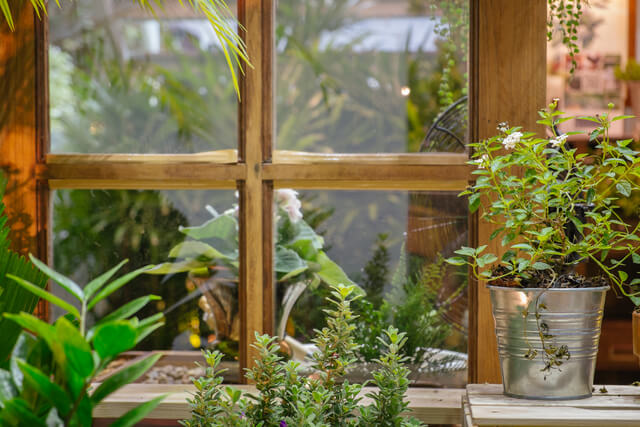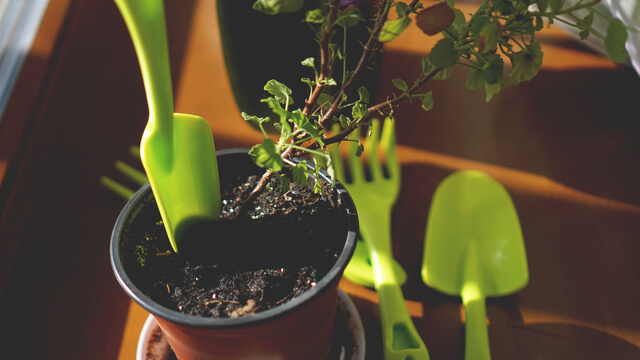A balcony is a great addition to any residence, particularly in a city setting. Urban inhabitants can frequently only manage to have a balcony garden.
A balcony garden might become the most wonderful place in one’s residence if it is well-designed. These are among the most stylish little balcony garden suggestions for your residence that are both flattering and functional.
You’re enhancing an otherwise dreary place by growing plants on your balcony. Furthermore, you are capable of completing the following tasks:
Cultivate living barriers to lessen noise pollution. Make it increasingly challenging for pests to get into your yard. Minimize your “food costs” by providing some fresh produce for the home.
While planting on a balcony, the very first aspect to note is if the balcony can sustain what you're cultivating. Click To TweetMaking plans for your balcony garden
While planting on a balcony, the very first aspect to note is if the balcony can sustain what you’re cultivating.
Several balconies ought to be capable of supporting a few pots or beds, but it’s a great idea to evaluate the space’s strength prior to filling it with vegetation.
You’d be amazed how weighty a pot can get once it’s filled with soil, water, and a fully loaded tomato plant, particularly if you have several of them.
Instead of cluttering your containers in one spot, distribute them out throughout your balcony. As a result, the added weight will be more evenly distributed, and you won’t have any unpleasant balcony gardening incidents.

Suitable growing conditions
Sun
What is the orientation of your balcony? The nicest balconies are those that face south, but those that face southeast or southwest will suffice.
Even if your window faces north, you can still produce crops. All you have to do now is change the sorts you’re growing to shade-loving variety.
Shade
Frequently, you’ll put up a balcony garden only to discover that you’ve positioned the vegetation in a location that is shadowed for 80 percent of the day by an obstacle.
Take more notice of how the sun shines on the balcony to determine the greatest spot for the plant.
Wind
The wind is significantly more of a concern with balcony gardens than it is with raised beds or pots on the floor.
Planting wind-tolerant plants, such as rosemary, should be your first choice. A different, more flexible alternative is to anchor your plants well and use windscreens to assist deflect some of the more ferocious gusts.
Step out a few times during the day, identical to monitoring the shelter on your balcony, to notice which direction the wind is and how intense the gusts are. Choose heavy-weight pots, such as terra-cotta, if you live in an area with a lot of breezes.

Taking care of water drainage
The majority of balconies include holes in the bottom or are inclined in such a way that water flows in a particular orientation.
When cultivating on a balcony, take this into consideration; the last thing you need to do is disturb a downstairs neighbor by pouring dirty water all over them every moment you water the garden.
Constructing a balcony rain barrel can help you gain additional preservation credits if you reside in a rainy area.
In this approach, you avoid wasting a lot of drainages and get to irrigate your garden with natural rainfall, that’s always better than using municipal water.
When cultivating on a balcony, take this into consideration; the last thing you need to do is disturb a downstairs neighbor by pouring dirty water all over them every moment you water the garden. Click To TweetDesign of a balcony garden
Because every balcony is different, the urban gardening artwork you build must be adapted to the specific needs.
However, there are certain basic guidelines to follow in order to develop a gorgeous, efficient, and, most importantly, lucrative balcony garden.
The ground, the railing, and anything else are the three different components to include on balconies. These multiple levels of understanding will help you create the most of the space constraints you have.
Installing pots on balcony railings
The balcony garden’s most prestigious area is the railings. They get the greatest sunlight and occupy the least amount of room because they hang off the balcony.
Balcony railing planter boxes are the most perplexing piece of gardening equipment, despite their worth. Since there are so many various kinds of railings, it’s sometimes difficult to figure out how to connect planters to them.
Regarding the abundance of wind that balconies receive, the last thing you need to do is connect a railing container haphazardly only to have it drop to the ground beneath.

Planters that you may sit on
If your rails are a standard measurement, you may typically find planters with a notched bottom that is the same diameter as yours. If you prefer a connector solution, these are excellent choices.
Everything you have to do now is fill containers with soil, container them with plants, and actually grow.
There isn’t always the greatest choice if your balcony receives a lot of wind, because it can wash off, notably whenever the soil dries out and the container becomes lightweight.
Planters with a screw-on lid
These really are similar to the sit-on-tops, except they lack the notched bottom. They’re perfect for timber because they’re fastened straight into the railing.
Planters with attachments
These are the most typical railing containers, and they include a hook design that allows them to be wrapped around the railing.
The container is then supported by its own strength, pushing against the railing. They’re excellent choices if you ensure the style will go with your railing.
Since there are so many various railing designs, it’s difficult to discern whether either of them would complement the balcony initially.
Measure the dimensions of the railing and compare it to the size of the planter container’s hook or connector.
Making it simple to maintain a balcony garden
Balcony gardening is appealing because it is a simple approach, to begin with, but there are a few pointers that will make it a breeze.
Plant seedlings rather than seeds
Buying seedlings from a garden center and transplanting those into your balcony garden is a simple way to have your garden started.
If you really want to stretch your gardening skills, planting seeds is a great alternative to explore. Unless you’re a first-time gardener, then, buy seeds from a garden center to get started quickly.
Containers that are larger are excellent
The major disadvantage of cultivating on a balcony in pots is that you’re cultivating in pots. They soon dry up, particularly if you use terra-cotta containers.
To avoid this and provide your plants with the consistent hydration they require, choose the biggest containers you can.
Because of the increased capacity, the ground will be capable of holding additional water and evaporating at a slightly slower pace.
Some Important Tips to start your Balcony Garden
Before you start, double-check your building’s policies. Due to the heaviness of terra cotta and ceramic pots, you may have to use rice pots, plastic or fiberglass containers, or cloth growing sacks with light soil mixtures.
It’s a considerable distance to tote water containers if you’re cultivating on a rooftop. Consider using drip irrigation or containers that water themselves.
You might also get an irrigation that can be easily filled from the bathtub. Be considerate and place plates or platters beneath your plants to catch the excess water.
The most essential thing is to choose the proper plants for your location. Don’t squander space for something that’s not likely to succeed. The most important consideration is the quantity of sunshine.
If you have a balcony that faces south and gets direct sunlight all day, then Cacti, many flowers, and most veggies will thrive there too if maintained well-watered.
Focus on low plants like coleus, ferns, impatiens, hostas, and begonias if the balcony faces north or is shadowed by surrounding houses for most of the day. Click To TweetFocus on low plants like coleus, ferns, impatiens, hostas, and begonias if the balcony faces north or is shadowed by surrounding houses for most of the day.
Some greens, such as chard, spinach, and lettuce, may thrive with only a half-day of sunlight. Some herbs are able to do so as well, which is fantastic for cooking purposes
Keep an eye out for any unusual circumstances. The further you go, the more the wind you’ll get, and warm, blowing breezes will soon dry out the plants.
A lattice or wire trellis that can deflect wind flow while also offering assistance for climber plants can accomplish the double duty. It can also provide a sense of seclusion.
You must keep on top of irrigation because of the drying effect of the wind. Consider using self-watering pots.
Several of your houseplants would enjoy a summer holiday outside. To prevent sun and windburn on the leaves, gently introduce them to their new place.
Probably won’t be capable of growing sufficient food to suit all of family needs, but several pole beans, a pot of lettuce, cherry tomatoes, and a couple of pepper plants will provide a flavor of warmer months. Make sure they’re in the brightest parts of the room.
In a small yard, maintenance is essential. Plants that are grown in pots rather than in the ground require more frequent watering. Another thing to bear in mind in self-watering pots or drip irrigation is to avoid overwatering.
To maintain leggy plants in check and increase bushiness, fertilize, deadhead, and pinch them down. To keep the plants prolific, make sure veggies are plucked once they are mature.
If you would not want to spend a ton of money, avoid buying readily available plants. Gardening supplies are a good place to look for pots.
Seeds can be purchased or shared with friends. Obtain seed flats from nurseries that have been abandoned. Make lovely containers out of coffee tins with a hole pierced through the bottom. Just one thing on which you should actually splurge is high-quality gardening soil. Common soil isn’t clean, and it can cause sickness and other issues.
Conclusion
Start with a few seedlings and then see how they fit within the routine; users may always add extra later.
Although working with restricted spatial and temporal can be difficult, a little forethought this season will go a long way to improving your miniature yard, a resounding success in the coming season.
You may also like to read
Low-Maintenance Plants – Houseplants that Don’t Easily Die by Negligence







One thought on “Some Amazing Balcony Garden Ideas to Grow your Favorite Plants”